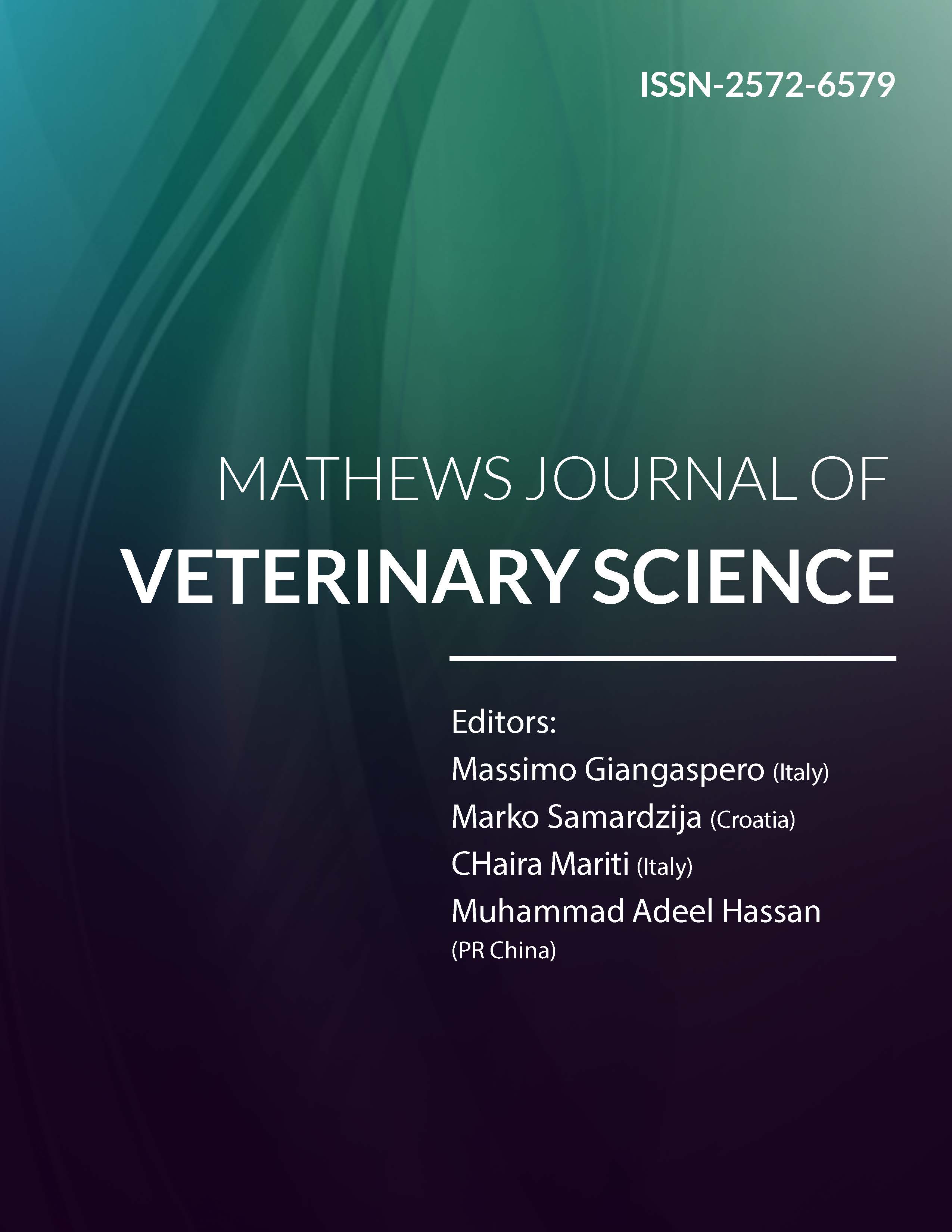
Information Links
Previous Issues Volume 8, Issue 3 - 2024
Diagnosis and Treatment of Canine Babesiosis in a Female German Shepherd in Tandojam, Pakistan
Adnan Yousaf1,*, Talat Bilal Yasoob2, Muhammad Bilal3, Dad Muhammad Anwar3, Arfa Ghaffar3, Sana3, Mughir Khan Lodhi3, Faiza Habib3
1Facultry of Animal Husbandry and Veterinary Science, Sindh Agriculture University Tandoajm-Pakistan
2Department of Animal Sciences, Ghazi University Dera Ghazi Khan-Pakistan
3Department of Livestock & Dairy Development Quetta-Pakistan
*Correspondence author: Adnan Yousaf, Facultry of Animal Husbandry and Veterinary Science, Sindh Agriculture University Tandoajm-Pakistan. Email: [email protected]
Received Date: May 17, 2024
Publication Date: June 5, 2024
Citation: Yousaf A, et al. (2024). Diagnosis and Treatment of Canine Babesiosis in a Female German Shepherd in Tandojam, Pakistan. Mathews J Vet Sci. 8(3):44.
Copyright: Yousaf A, et al. © (2024)
ABSTRACT
A 2.5-year-old female German shepherd weighing 30 kg was received at the Department of Veterinary Medicine at the Sindh Agriculture University in Tandojam, Pakistan. Clinically Anamnesis indicated that the patient had anorexia for ten days, along with two episodes of emesis, dark urine, increased water consumption, and sporadic lethargy. Bitch seemed physically thin, with a lifeless covering of hair. A clinical examination revealed pale conjunctiva and mucous membranes, elevated CRT, and increased skin tent twisting time. The temperature, heart rate, and respiration rate were also elevated, measuring 103.8 oF, 128/min, and 56/min, respectively. Complete blood counts (CBCs) and microscopic analysis of stained thin blood smears were used in the diagnosing process. The CBC report and blood test confirmed the presence of canine babesiosis, which was treated with metronidazole for 1 week, doxycycline monohydrate for three weeks, and a single dose of imidocarb diprionate. Up to appropriate feed intake, supportive treatment was also administered. After the three weeks of therapy, Bitch was fully healed.
Keywords: German Shepherd, Bitch, Babesiosis, Tandojam, Pakistan